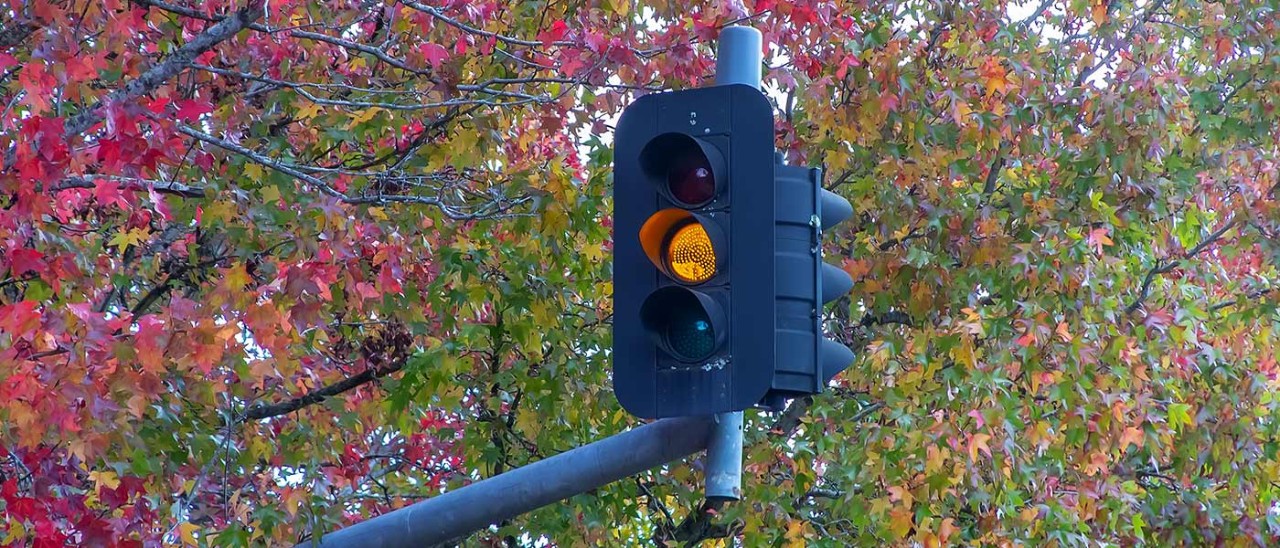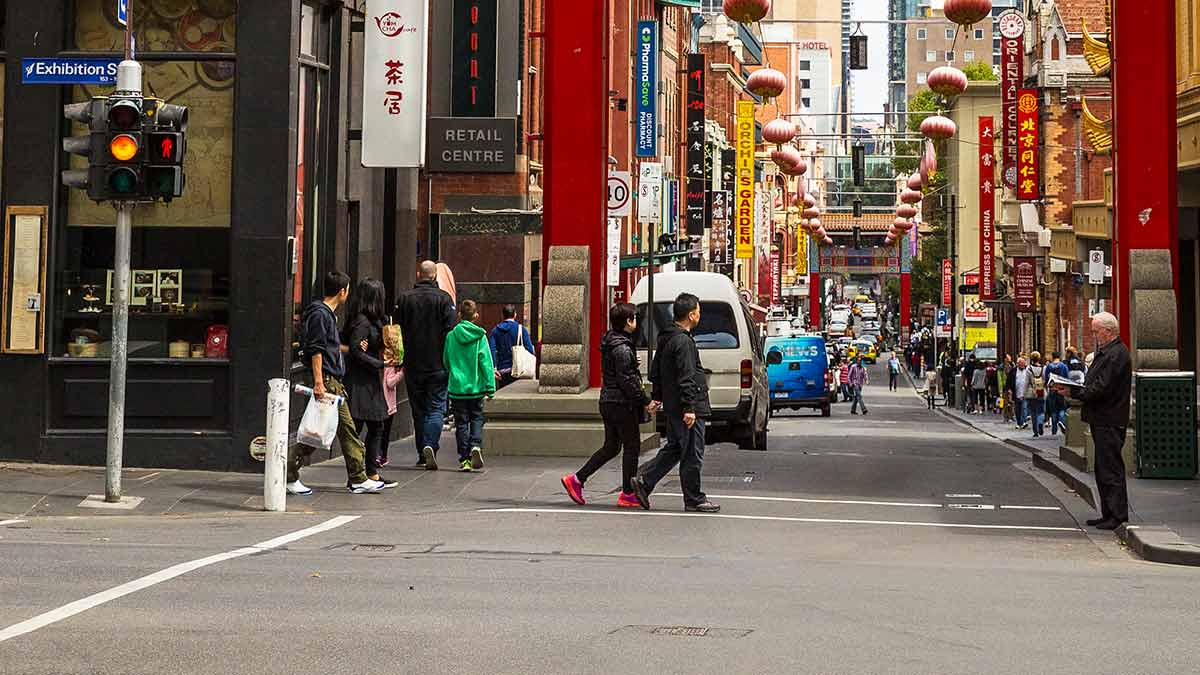Discover key insights on Victoria’s West Gate Tunnel, including essential facts, toll details, and travel benefits for drivers.
What does a yellow traffic light mean? Rules in Victoria

Do you know the correct way to respond to a yellow traffic light? Confusion about this commonly misunderstood road rule can put lives at risk and result in a hefty fine.
Knowing what to do at traffic lights is one of the most important road rules for motorists. Obeying traffic lights helps prevent accidents, reduce congestion and protect all road users, including drivers, pedestrians and cyclists.
The general principle that ‘red means stop’ and ‘green means go’ applies in most situations – but when it comes to amber or yellow traffic lights, some confusion remains in the community about what the yellow light truly means and the correct way to respond.
Transport Victoria states that at a yellow light, motorists “must stop unless it’s not safe to do so”. But what exactly does “not safe” mean?
RACV Head of Policy James Williams says drivers should rethink how they view yellow traffic lights. “Motorists should view yellow lights as the start of the red, not the end of the green,” he says. “The only reason you can drive through a yellow light is if you're so close to the intersection that braking could either cause a crash or cause you to stop within the intersection.”
This guide provides information on what laws and fines apply to a yellow light, how red-light cameras work and, most importantly, how to react when approaching a yellow light or flashing yellow light at an intersection.
Are you up to date on your driving knowledge?
- Victoria’s new drink driving laws and the penalties for breaking them
- The most misunderstood road rules in Victoria
- Road safety around schools – what everyone needs to know
- Understanding mobile phone road rules in Australia
- Understanding inbuilt device and car screen laws in Victoria
- The written and unwritten pedestrian road rules in Victoria
Can I be fined for driving through a yellow traffic light?
Yes. If you drive through a yellow light when you could have safely stopped prior to the intersection, you are liable to be fined.
Under Victorian road rules, failing to obey traffic lights – including red lights, yellow lights and red/yellow arrow lights – can incur a penalty of $494 and 3 demerit points (current for the 2024/25 financial year).
There are also penalties for failing to clear an intersection as soon as possible if entering on a yellow light, or failing to leave an intersection as soon as practicable if the lights change to red after entering the intersection. These are currently $395 and 3 demerit points.
If you choose to dispute a traffic light infringement in court and lose, you could be liable to pay a fine of up to $1976.
How does a red light camera work?
In an intersection where a red light camera is installed, if your vehicle crosses over the stop line after the traffic light (including arrow) has turned red, sensors in the road are designed to detect the infringement and trigger the camera to take an image. Some cameras also use radar signals to capture the moment.
As detailed on the Victorian Government’s red light camera information page, the camera is set up to take two images to prove that the vehicle entered the intersection after the light turned red and then continued through against the red. The camera also captures the time elapsed between a traffic light turning red and the vehicle entering the intersection.
If the traffic light turns from yellow to red while you are already in the intersection, you should not be issued with a fine. But if you’ve attempted to ‘beat’ the lights and not stopped safely upon seeing the yellow light ahead of the intersection, you run the risk of being caught on camera and becoming involved in a crash.
Some fixed road safety cameras can detect both red light and speeding offences, so if you’re speeding through the intersection you may be issued with a further penalty. For example, full licence holders caught speeding by less than 10km/h will incur a penalty of $247 and 1 demerit point (current for the 2024/25 financial year), increasing to $395 and 3 demerit points for speeds 10-24km/h above the limit.
What should I do if I see a yellow traffic light?
RACV Driver Education and Development Manager Silvia Morris says learner and novice drivers in particular can receive mixed messages from friends, family and even some instructors on what to do when faced with a yellow traffic light.
“Some tell them that they should try and make it across the intersection if they have time, and others tell them they should stop if it is safe to do so,” she says. “Because of this, learners often get into a panicked situation when they see the light ahead turn yellow and find it difficult to work out whether they should stop or continue.”
Morris reiterates that yellow lights should not be seen as an excuse to speed up. “Drivers need to change their mindset from, ‘Can I make it?’ to ‘Can I stop?’,” she says. “Ask yourself, ‘Can I safely stop before the line?’ – and if the answer is ‘Yes’ then you should.
“Drivers need to consider the road conditions, too. For example, if the road is wet, the vehicle will require additional distance to stop safely when roads can be slippery.”
She says there is a simple test to determine what counts as a ‘safe stop'. If you're so close to the intersection that you need to slam on the brakes to stop, or that braking would have you stop in the middle of the intersection, then you should proceed through the yellow light. If you can progressively stop without braking dangerously or abruptly, then you should not proceed.
It’s also a good idea to check your mirrors and be aware of surrounding traffic as you approach an intersection. How other vehicles are behaving around you may also influence your decision if the lights do turn yellow. If a car is tailgating you, the safest decision may be to proceed through a yellow light to avoid sudden braking that could cause a rear-end collision.
Depending on the local speed limit, yellow lights last for between three and five seconds (with higher speed limits requiring longer durations for safety reasons). Failing to respond appropriately to a yellow light risks not just financial penalties, but also collisions with other vehicles.
“Considering they've likely accelerated to clear the intersection in time, you can imagine the very serious collisions and injuries that can result from these decisions," Morris says.
More: Australia’s best, affordable, new first cars for drivers in 2025

Drivers also need to watch out for pedestrians when there's a yellow traffic light. Image: Visit Victoria
What do flashing yellow traffic lights mean?
Occasionally you might come across an intersection where the traffic lights are flashing yellow. This usually indicates that the lights are not working.
Police traffic controllers are usually quick to the scene to direct traffic when this occurs. However, sometimes you may arrive at such an intersection before the police. In these circumstances you must follow the same rules as an intersection that features only a stop sign or a give way sign.
That includes giving way to any vehicle approaching the intersection from the right, as well as any oncoming traffic travelling straight or turning left if you yourself want to turn right. The safest option when faced with such an intersection is to make a left turn (which will have the least amount of intersecting traffic) and find an alternate route to your destination.
“You must stay alert and be very cautious as there are many other drivers who may not be aware of these rules and who may not follow the correct process,” Morris says.
Yellow arrow lights at intersections
The same rules apply to yellow arrow traffic lights as they do for regular yellow traffic lights. That means you should not enter the intersection if you can safely stop before the stop line. If you have already entered the intersection when the light turns yellow or red, you must exit the intersection as soon as it is safe to do so.
Flashing lights at pedestrian crossings
You may encounter a pedestrian crossing that has yellow lights flashing. According to Transport Victoria, you can recommence driving after you have given way to pedestrians on the crossing. If the pedestrian lights have only a red and yellow light, you can proceed with caution when the yellow light is flashing but you must give way to any pedestrians. These lights are turned off when not in operation.
The information provided is general advice only. Before making any decisions please consider your own circumstances and the Product Disclosure Statement and Target Market Determinations. For copies, visit racv.com.au. As distributor, RACV Insurance Services Pty Ltd AFS Licence No. 230039 receives commission for each policy sold or renewed. Product(s) issued by Insurance Manufacturers of Australia Pty Ltd ABN 93 004 208 084 AFS Licence No. 227678.


